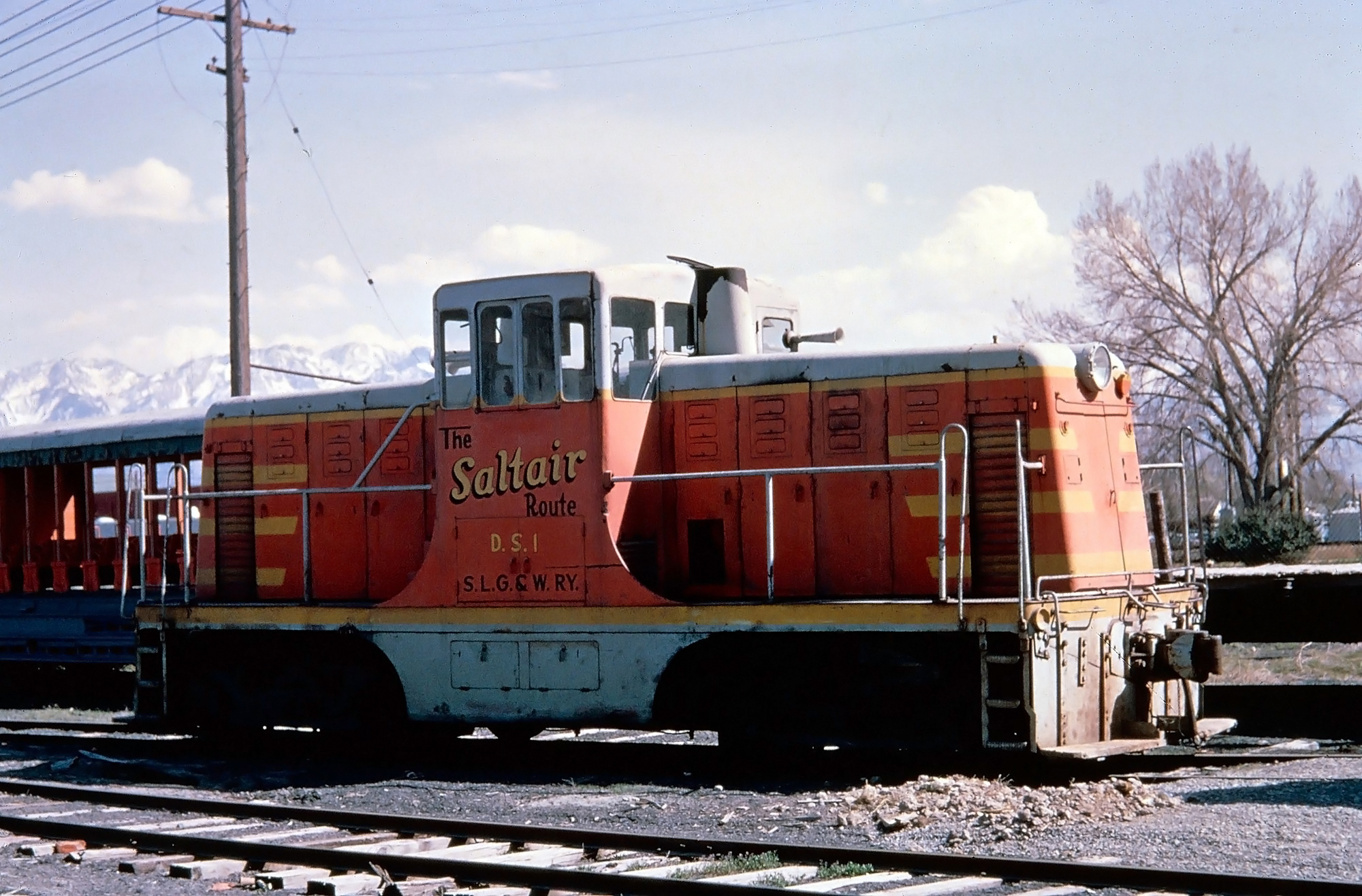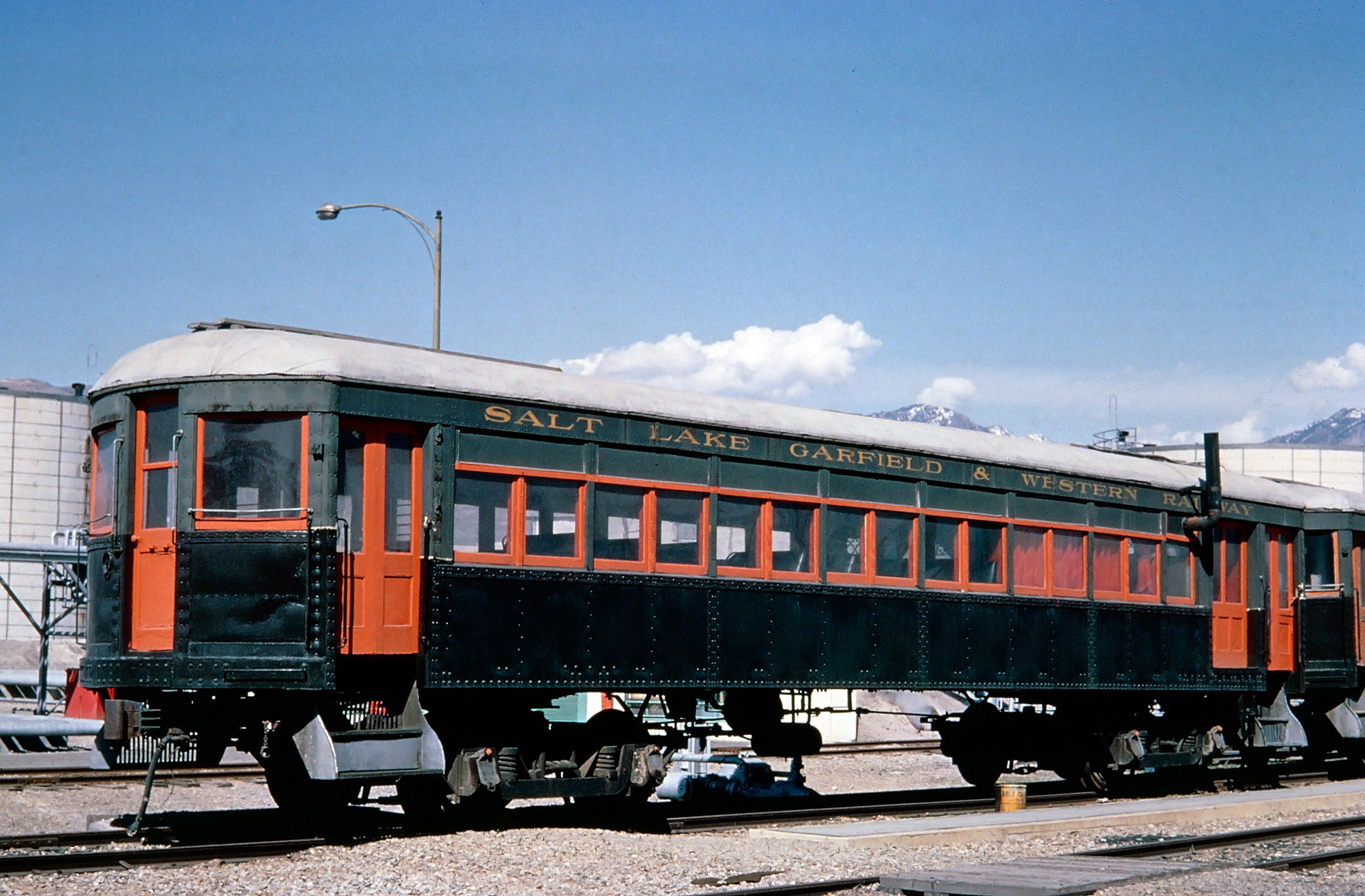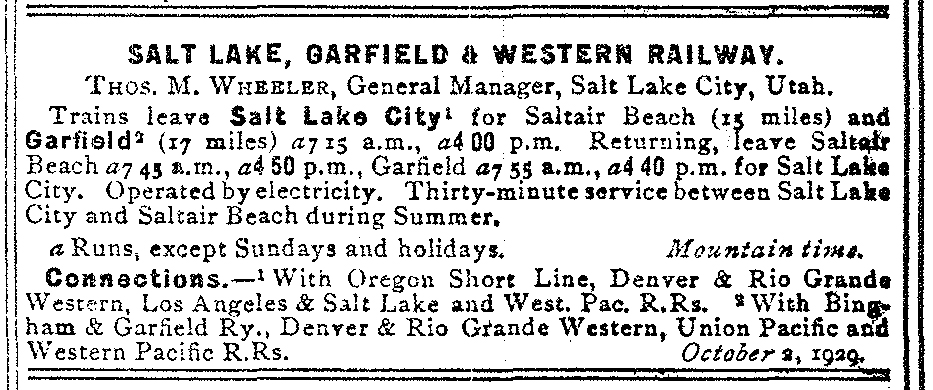Salt Lake, Garfield & Western Railway: "The Saltair Route"
Published: June 29, 2024
By: Adam Burns
The Salt Lake Garfield and Western Railway (SLG&W) has a rich history that dates back to its incorporation on September 6, 1891, originally named the Saltair Railway.
Designed with the express purpose of capitalizing on the burgeoning tourist market, the railway provided a convenient means of transportation to the idyllic Saltair Beach Resort on the shores of the Great Salt Lake.
In April 1892, the railway underwent reorganization and became known as the Salt Lake & Los Angeles Railroad, only to be renamed shortly thereafter to the Salt Lake, Garfield & Western Railway.
Beyond ferrying tourists to Saltair, the line also transported freight to key mining areas in Garfield, Utah, including operations for Morton Salt located along the Great Salt Lake shoreline.
Significant milestones in SLG&W's history include the official opening of the Saltair Resort on June 8, 1893.
Initially founded and owned by The Church of Jesus Christ of Latter-day Saints, the resort's ownership was later transferred to the railway under the stewardship of the Snow Family. In the early 1960s, the railroad and its resort-related operations were sold to the Hogle family.
For many years, passenger traffic to the Saltair Resort represented the railway's primary source of revenue. Reflecting a commitment to modernization, the line underwent electrification in 1916, a project that reached completion in 1919, enhancing the efficiency and reliability of its services.
This historical evolution of the SLG&W showcases its adaptability and significance within both the recreational and industrial landscapes of Utah. In October, 2020 Patriot Rail, a major short line conglomerate, acquired the SLG&W
 Salt Lake, Garfield & Western 44-tonner DS-1 in Salt Lake City, circa 1974. This unit was built as Ontario & Western #105. American-Rails.com collection.
Salt Lake, Garfield & Western 44-tonner DS-1 in Salt Lake City, circa 1974. This unit was built as Ontario & Western #105. American-Rails.com collection.Early Beginnings
The inception of the Salt Lake, Garfield and Western Railway dates back to 1891, when it was originally established as the Salt Lake and Los Angeles Railway.
The intent behind its creation was to provide transportation to the Saltair Resort, an amusement park located on the southern shore of the Great Salt Lake. The resort, featuring a Moorish-styled pavilion, was a popular destination designed to offer recreational opportunities similar to those found at venues like Coney Island in New York.
The first segment of the line ran from downtown Salt Lake City, heading westward to the shores of the Great Salt Lake. This line enabled a significant number of tourists and residents to travel conveniently to the Saltair Resort, thus fueling the resort's popularity.
Evolution and Renaming
Following financial difficulties and reorganizational adjustments, the railway was renamed the Salt, Lake Garfield and Western Railway in 1916. The "Garfield" in the name was derived from Garfield Beach, an earlier popular destination along the Great Salt Lake.
At this stage, the railway's primary focus remained on passenger services, making it an essential artery for people seeking entertainment at the lake's resorts.
The SLG&W experienced its height of popularity during the early 20th century when the Saltair Resort was at its zenith.
Special excursion trains and regular services ran frequently, particularly during weekends and holidays. The trains operated smoothly, facilitated by steam locomotives initially and later transitioning to electric streetcars.
Effects of Changing Recreational Trends
Despite its early success, the railway faced substantial challenges as the years progressed. The Great Salt Lake's unique ecosystem and fluctuating water levels posed continual problems. High salinity and the accumulation of salt deposits caused damage to tracks and equipment, necessitating costly maintenance and repairs.
Additionally, changing recreational trends and the advent of the automobile led to a decline in passenger numbers. The convenience of car travel, coupled with the development of new entertainment venues, diverted attention away from the Saltair Resort.
Compounding these issues, the resort suffered significant damage from fires and floods over the years, diminishing its appeal and consequently reducing the need for passenger rail service to the area.
Transition to Freight Operations
Recognizing the inevitable decline in passenger service, the SLG&W pivoted towards freight operations.
This transition began in earnest in the mid-20th century, as the railway shifted its focus to serving the industrial needs of the Salt Lake City region. The transformation was gradual but strategic, aiming to capitalize on the burgeoning demand for commercial and industrial transport.
The rail line accumulated a variety of industrial clients, including manufacturers, warehouses, and distribution centers located along its route. The ability to facilitate the transportation of goods such as minerals, chemicals, and other industrial materials enabled the SLG&W to establish a steady and profitable client base.
Modern-Day Operations
Today, the Salt Lake, Garfield and Western Railway operates as a shortline railroad, primarily dedicated to freight services. It is currently owned by the Patriot Rail Company, a holding company that specializes in the operation and maintenance of shortline railroads across the United States.
Official Listing (October, 1929)
Route and Infrastructure
The SLG&W operates on approximately 16 miles of track, primarily serving the industrial areas surrounding Salt Lake City.
The principal route runs from the industrial district on the west side of Salt Lake City, extending northwest to the Great Salt Lake. The railway's infrastructure includes various spurs and sidings that connect directly to the facilities of its industrial customers.
The main commodities transported by the SLG&W include chemicals, minerals, plastics, and building materials. The railroad plays a crucial role in linking these industrial producers to the larger national rail network, thereby facilitating the efficient movement of goods to markets across the country.
Equipment and Motive Power
The first locomotive of the Salt Lake Garfield and Western Railway (SLGW), a steam-driven Rhode Island Locomotive Works 4-4-0, was delivered on May 24, 1892.
Tested by the Rio Grande Western prior to entering revenue service, this engine, numbered 1, weighed 45 tons and featured 17x24-inch cylinders with 62-inch drivers.
A second, identical locomotive, numbered 2, arrived in April of the following year, followed by a third 4-4-0 locomotive from Pittsburgh Locomotive Works in 1906. Locomotive No. 1 was retired in 1919, and Nos. 2 and 3 followed suit in 1921.
Until the line's electrification, these were the only locomotives owned by the SLG&W. During peak demand, the railway leased passenger locomotives from the Rio Grande Western and the Oregon Short Line (Union Pacific) to supplement operations.
The transition to electrification saw significant changes. The only electric freight locomotive, No. 401, was purchased in 1946 and was a reconditioned Salt Lake & Utah 104. Additionally, in 1918, the SLG&W acquired six McGuire-Cummings interurban cars, which were versatile enough to haul freight.
When operated in Multiple Unit (MU) configuration, two of these interurban cars could pull up to 40 fully loaded boxcars. The electric equipment ran on a 1500-volt system, delivered via single-suspension double-line poles. During its years of independent operation, the SLG&W owned and operated a total of thirteen diesel locomotives.
The diesel era began with the purchase of 44-ton switcher 'DS 1' in December, 1951. Complementing its diesel fleet, the railway also utilized motor car MC-3, built by American Car & Foundry in 1951, which supplemented diesel-powered passenger services. This motor car was later sold to the California Western Railroad, where it continues to operate as M-300.
Between 2017 and 2019, the SLGW's roster included three locomotives: 'DS 9' and 'DS 10', both former Union Pacific SW10 switchers, and 'DS' 11, an ex-Southern Pacific MP15AC that joined the fleet on June 14, 2017.
In late 2019, the railway updated its roster by acquiring an ex-Kennecott Copper GP39-2 locomotive, designated 'DS 13', and an MP15DC, given 'DS 12'. This transition led to the retirement of the two SW10 locomotives by the end of the year.
Following the acquisition of the SLG&W by Patriot Rail, 'DS 11' was retired. During this time two GP9s, numbered 8201 and 8223, were added, ensuring the railway's continued ability to meet freight transportation demands.
Economic and Community Impact
Beyond its operational capabilities, the Salt Lake Garfield and Western remains an essential contributor to the local economy. By providing reliable freight services, the railway supports job creation and economic activity within the industrial sectors it serves. Moreover, it contributes to the broader logistical infrastructure that enables commerce to thrive in the Salt Lake City region.
The SLG&W also maintains a connection to its historical roots. Efforts have been made to preserve the legacy of the railway and the role it played in the development of the Saltair Resort and the surrounding area. Historical societies and rail enthusiasts often highlight the significance of the SLG&W in the broader narrative of Utah's transportation history.
Future Prospects
As the Salt Lake Garfield and Western looks to the future, its focus remains on adapting to the evolving needs of the industrial clients it serves.
There are ongoing discussions about infrastructure investments and potential expansions to accommodate new business opportunities. Environmental considerations also play a role, as the railway seeks to improve its sustainability and reduce its ecological footprint.
Partnerships with larger railroads and integration into multimodal transport solutions are also key strategies for the SLG&W.
By positioning itself within the interconnected framework of national and international supply chains, the SLG&W aims to enhance its relevance and competitive edge in the modern logistics landscape.
 One of the Salt Lake, Garfield & Western Railway's interurban cars (originally manufactured by the McGuire-Cummings Car Company in 1918) is seen here in Salt Lake City during the 1960s. By this time the road had discontinued passenger operations but still survives today as a freight carrier. American-Rails.com collection.
One of the Salt Lake, Garfield & Western Railway's interurban cars (originally manufactured by the McGuire-Cummings Car Company in 1918) is seen here in Salt Lake City during the 1960s. By this time the road had discontinued passenger operations but still survives today as a freight carrier. American-Rails.com collection.Conclusion
The Salt Lake Garfield and Western's journey from a passenger excursion line to a vital shortline freight railroad is a testament to adaptability and resilience.
From its early days of ferrying eager tourists to the shores of the Great Salt Lake, to its current role in supporting industrial logistics, the SLG&W has continuously evolved to meet changing demands.
As it navigates the challenges and opportunities of the 21st century, the railway remains an enduring symbol of innovation and progress in the realm of rail transport.
Recent Articles
-
New Jersey Thomas The Train Rides
Dec 20, 25 06:32 PM
Here's a comprehensive guide to what you can expect at Day Out With Thomas events in New Jersey. -
Michigan Thomas The Train Rides
Dec 20, 25 06:28 PM
Here’s an in-depth look at what a typical "Day Out with Thomas" event in Michigan entails, what makes it special, and why it remains a must-visit for families. -
Georgia Christmas Train Rides In Blue Ridge!
Dec 20, 25 01:26 PM
Each holiday season, the Blue Ridge Scenic Railway transforms into the Holiday Express—a cheerful, family-friendly journey designed to wrap you in the sights and sounds of Christmas.




